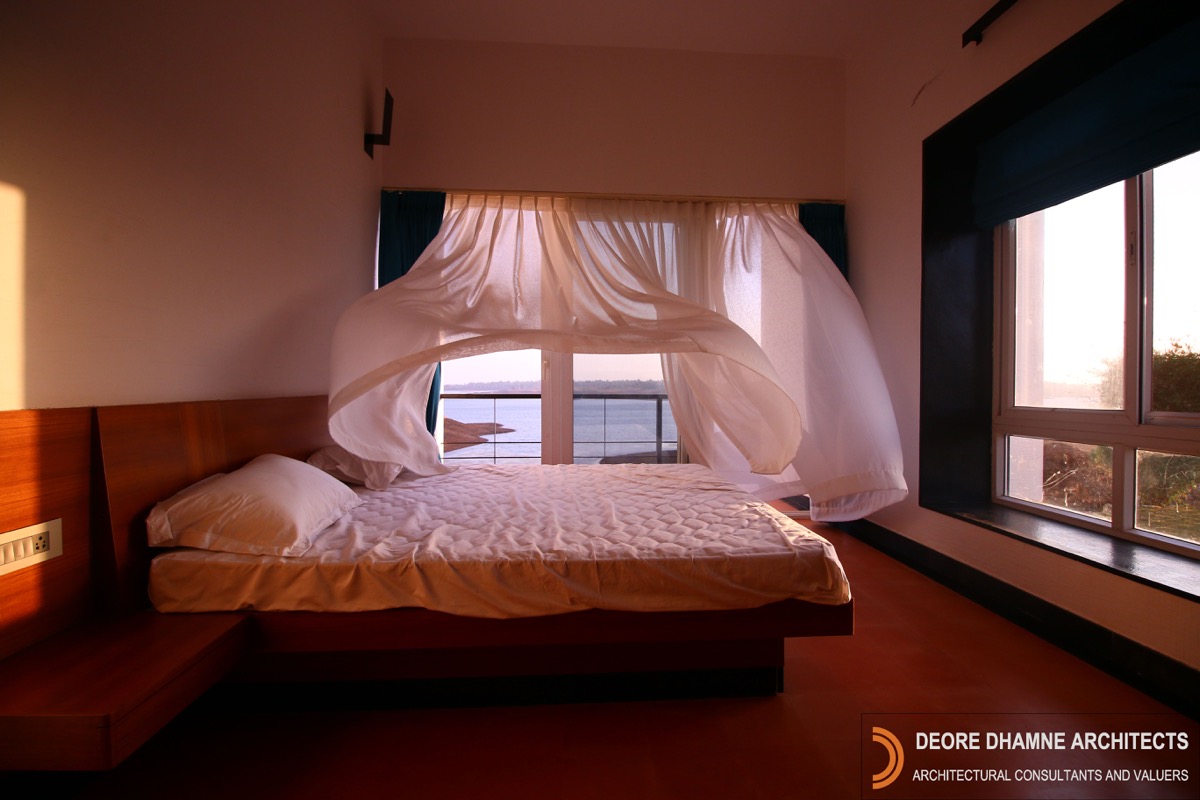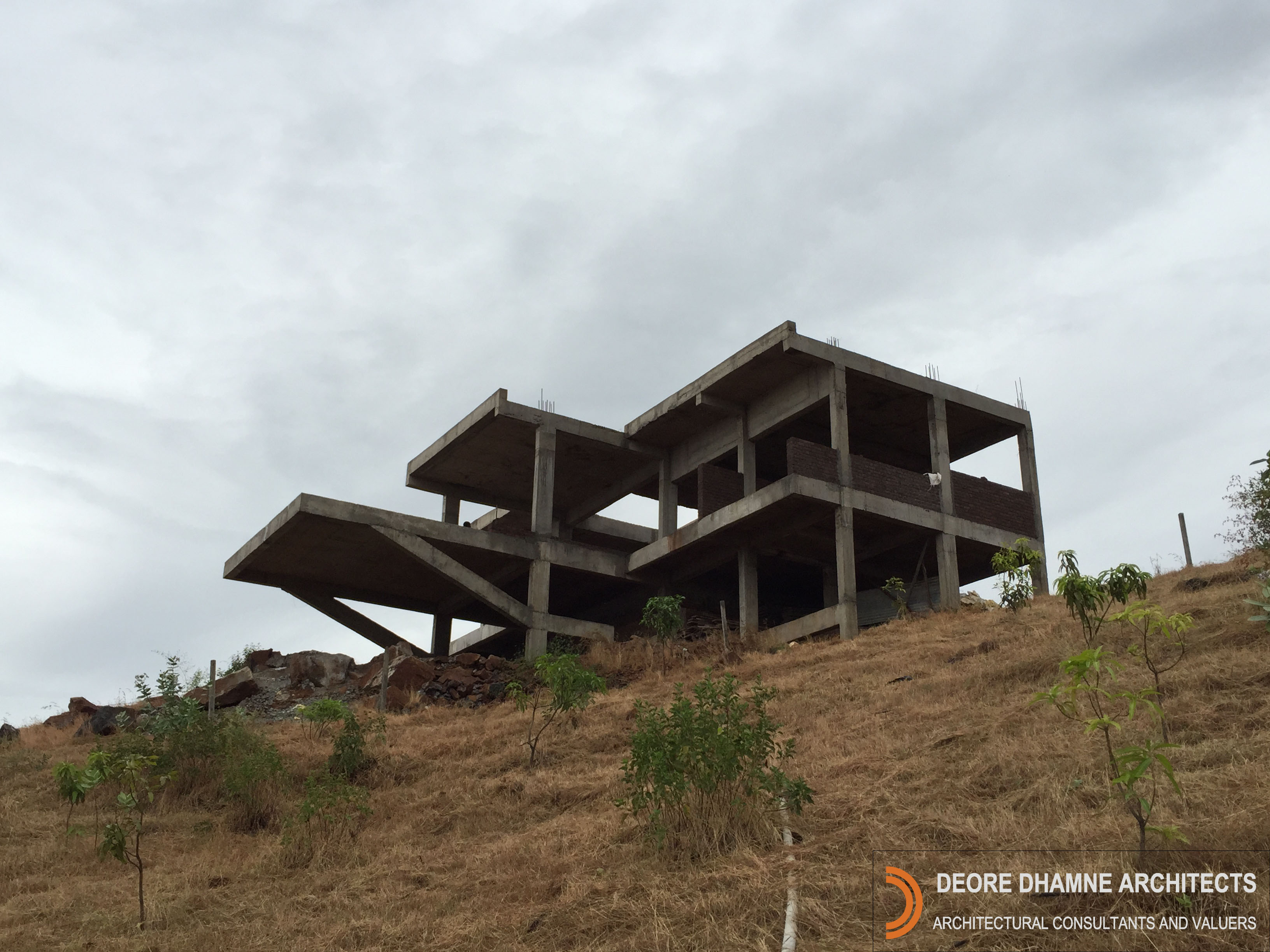Project Location: Zarwad Villege, Trimbak , Nasik.
Principal Architect: Ar. Chinmay Dhamne Deore Dhamne Architects.
Photography: Jai Gokhale
 Architects brief about the project – Philosophy:
Architects brief about the project – Philosophy:
It was very interesting and mainly challenging to work on a project when it is my own farm house. As an architect I always liked the environmental and green aspect of the design, also wanted the design to be very much functional rather than just a visual treat.
Location:
The site has been located at a part of a hillock which is surrounded by water on 3 sides. The site is a very long but narrow strip of 23 meters. The site is adjacent to Vaitarna dam in Zarwad Village, Igatpuri, Nashik.
Weather:
Nasik has a tropical wet and dry climate. The location has strong rainfall in the rainy season with heavy wind flow. The summers are dry but with good breeze to capture.
The Design:
While designing the farm house the basic elements like light and ventilation were the prime most important factors.
Sustainable design Elements:
- Each room gets ample natural light and cross ventilation.
- The central area which is open with living, dinning and kitchen has a court yard whichprovides natural light and vents out all the hot air in the house.
- Box Windows help to keep out the heavy rains in monsoon and harsh sun in summers.All the bedrooms, kitchen and living area has a balcony or deck so that it creates a bufferzone to protect from sun and rain.
- The floor is made up of natural mud tiles, which helps to keep the temperature cool in thesummers and warm in the winters.
- Buffer zone is created with balconies and passages on both the longer sides of the house toprotect from harsh sun and rain.
Functionality with the design:
- The house has been planned linear so that ALL the areas have the view of the water body.
- As this is a farm house, the huge entrance lobby helps to sit and enjoy the nature and also one can keep watch while kids are playing outside, it also helps as a cut off area in the harsh summers as in the Old Houses, Veranda’s were provided.
- The central area is open area which has activities like Living, Dinning and Kitchen with a court yard. This area is used the most as it is planned as a seamless area with two tiers sitting in the court yard.
- The master bed has an open bathroom with the view of the water body.
- The Kids Bed room has an extra shower area which is open to sky and open towards the water body.
- The Farm House has a deck area which is 6 M x 6M which is semi cantilever towards the water body.
- The deck area is accessible from the living area. The living area has a full length glass widow of 6M and the height is 3.2 meters which is fully open able so that the living area expands and becomes a huge usable place.
- All the lighting fixtures are custom designed according to the overall theme of the house and made in MS plates. The Staircase is also custom designed in MS plate, and is cantilever from the wall.
- The furniture is also completely custom designed according to the overall theme.
Materials:
- Mud tiles are used for flooring.
- Natural stone (Granite, Kaddapa) used for skirting and window frames.
- Shahabad is used for terrace flooring.
- RCC frame structure with regular brick masonry is used.
- Lighting fixtures, staircase and railings all are made from MS.
The Structural Designers remark –
Though the project was very small and simple, it was an engineering challenge to design a 6 M cantilever deck. The Challenge was due to contour site condition and architectural requirement of Ar. Chinmay Dhamne. It was easy for us to say no or to convince architect to go for a conventional solution, but due to our organization’s core value of accepting challenging works we decide to put our best to design and detail out the cantilever deck, overlooking the valley. We were told that the deck should appear as it is free standing over the valley , so we carried out frame analysis in “Staad Pro software” such that the inclined strut is taken at a point at 2/3rd of total span of 6 m, thereby creating 1/3rd overhang. Frame was analyzed designed and executed successfully.The architectural brief for the cantilever MS plate staircase was also challenging to design and execute, as only 8mm MS plate is used for the staircase which hangs out 1m form the wall. The main challenge was about, not having the vibrations when one climbs the staircase. We thank Deore Dhamne Architects for the opportunity.
– Er. Manish Bothra, Rakesh Jain Associates.
Drawings:






















